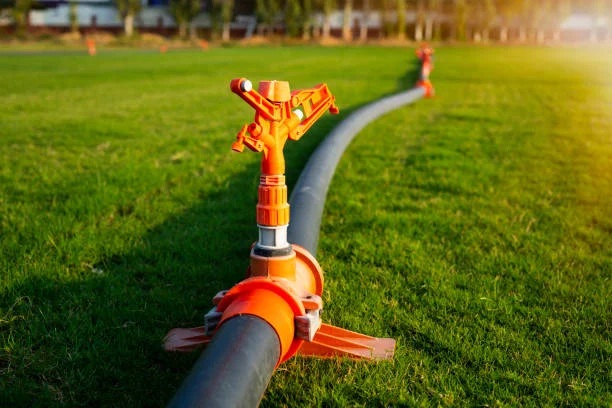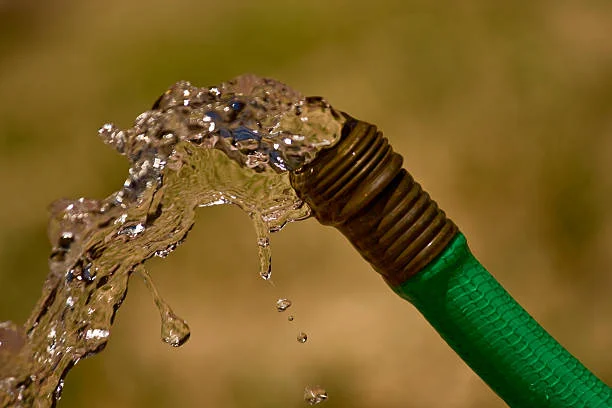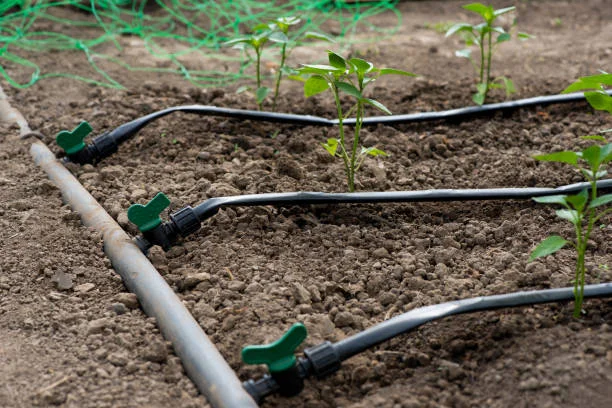Elevate your crop game with the reliability of HDPE irrigation pipes.

Harvest Haven: Securing Crop Success with HDPE Irrigation Pipe
Setting the Stage: The Importance of Irrigation in Agriculture
Irrigation stands as the backbone of modern agriculture, ensuring consistent water supply to crops for optimal growth and yield. Without reliable irrigation systems, farmers face the daunting challenge of unpredictable weather patterns and insufficient moisture levels, jeopardizing their harvests and livelihoods.
Introducing HDPE Irrigation Pipes: The Game-Changer for Crop Success
In the quest for enhanced agricultural productivity, HDPE irrigation pipes emerge as transformative solutions. These advanced conduits revolutionize the way water is delivered to crops, offering unparalleled durability, flexibility, and efficiency. With HDPE pipes, farmers can mitigate risks, maximize yields, and elevate their crop game to new heights.
The Basics of HDPE Irrigation Pipes
Understanding HDPE: What Sets It Apart in Irrigation?
High-density polyethylene (HDPE) is a versatile thermoplastic known for its exceptional properties, making it ideal for irrigation applications. Unlike traditional materials like PVC or metal, HDPE exhibits superior resistance to corrosion, abrasion, and chemical degradation. Its smooth interior surface minimizes friction loss, ensuring efficient water flow and minimal energy consumption.
Advantages of HDPE Pipes Over Traditional Irrigation Systems
Compared to conventional irrigation systems, HDPE pipes offer a myriad of advantages. Their lightweight nature simplifies handling and installation, reducing labor costs and installation time. Additionally, HDPE pipes boast superior flexibility, allowing them to adapt to various terrain contours and withstand ground movement without compromising structural integrity.
Key Features of HDPE Irrigation Pipes
Durability: Why HDPE Pipes Last Longer in the Field
HDPE pipes are engineered to withstand the rigors of agricultural environments, including exposure to UV radiation, soil chemicals, and fluctuating temperatures. Their inherent toughness and resilience ensure long-term performance and minimal maintenance requirements, translating to cost savings and peace of mind for farmers.
Flexibility: Adapting to Various Terrain and Weather Conditions
One of the standout features of HDPE pipes is their remarkable flexibility, enabling them to conform to the natural contours of the land. Whether traversing uneven terrain or navigating around obstacles, HDPE pipes maintain their structural integrity, reducing the need for costly fittings and joints. This flexibility also enhances system reliability, minimizing the risk of leaks and failures.
Corrosion Resistance: How HDPE Pipes Withstand Harsh Environments
Unlike metal pipes susceptible to rust and corrosion, HDPE pipes exhibit exceptional resistance to chemical attack and degradation. Even in aggressive soil conditions or saline water environments, HDPE remains unaffected, ensuring uninterrupted water supply to crops. This corrosion resistance prolongs the lifespan of HDPE pipes, making them a durable and cost-effective choice for irrigation systems.
Installation and Maintenance Tips For HDPE Irrigation Pipes
Proper Installation Techniques for HDPE Irrigation Pipes
Achieving optimal performance from HDPE irrigation systems begins with proper installation techniques. Before installation, it is essential to conduct site assessments to identify potential obstacles and plan the pipeline route accordingly. During installation, attention to detail is crucial, including proper alignment, trench preparation, and joint fusion techniques. Adhering to manufacturer guidelines and industry best practices ensures the longevity and reliability of the irrigation system.

Maintenance Best Practices: Keeping HDPE Pipes in Prime Condition
Regular maintenance is essential for preserving the integrity and performance of HDPE irrigation pipes. Inspections should be conducted periodically to identify any signs of damage, including leaks, cracks, or degradation. In addition, routine flushing and cleaning help remove sediment buildup and prevent clogging, ensuring optimal water flow to crops. By implementing proactive maintenance measures, farmers can maximize the lifespan of their HDPE irrigation system and minimize downtime.
Cost and ROI Assessment with HDPE Irrigation Pipe
Cost Analysis: Comparing HDPE Pipes to Conventional Systems
While the initial cost of HDPE pipes may be higher than that of traditional materials, such as PVC or metal, a comprehensive cost analysis reveals their superior long-term value proposition. Factors such as durability, maintenance requirements, and operational efficiency must be considered when evaluating the total cost of ownership. Despite the upfront investment, HDPE pipes offer significant cost savings over their lifespan, making them a financially prudent choice for farmers.
Calculating ROI: Understanding the Long-Term Benefits of HDPE Irrigation
Calculating the return on investment (ROI) for HDPE irrigation systems involves assessing both tangible and intangible benefits. In addition to quantifiable factors such as reduced maintenance costs and increased crop yields, other considerations, such as water conservation and environmental sustainability, contribute to the overall ROI. By analyzing the long-term economic and environmental impact of HDPE pipes, farmers can make informed decisions that maximize returns and promote sustainable agriculture.
HDPE Irrigation Case Studies and Success Stories
Real-Life Examples: How Farmers Have Benefited from HDPE Irrigation
Numerous case studies illustrate the transformative impact of HDPE irrigation systems on crop production. From arid regions facing water scarcity to fertile farmlands seeking improved efficiency, farmers worldwide have experienced tangible benefits from adopting HDPE pipes. Increased yields, reduced water consumption, and enhanced system reliability are among the common outcomes reported by farmers, highlighting the versatility and effectiveness of HDPE irrigation in diverse agricultural settings.
Testimonials: Hearing from Farmers Who Made the Switch to HDPE
Testimonials from farmers who have transitioned to HDPE irrigation provide valuable insights into the practical advantages of these systems. Farmers often cite factors such as ease of installation, durability, and water-saving capabilities as compelling reasons for choosing HDPE pipes. By sharing their firsthand experiences and success stories, these farmers inspire others to embrace HDPE irrigation solutions, fostering a community of innovation and sustainable farming practices.

HDPE Irrigation Pipes Environmental Impact
Eco-Friendly Solution: HDPE Pipes and Sustainable Agriculture
In an era of increasing environmental awareness, HDPE irrigation pipes emerge as eco-friendly alternatives to traditional materials. Their lightweight design, coupled with reduced water consumption and minimal maintenance requirements, aligns with global efforts to promote sustainable agriculture. By minimizing environmental impact and conserving natural resources, HDPE pipes play a vital role in preserving the planet for future generations.
Reduction in Water Waste: The Environmental Benefits of HDPE Irrigation
Water scarcity remains a pressing concern in many regions, necessitating efficient water management solutions in agriculture. HDPE irrigation pipes address this challenge by minimizing water waste through leak-proof designs and precise water delivery mechanisms. By optimizing water usage and reducing runoff, HDPE irrigation systems contribute to water conservation efforts, mitigating the impact of droughts and climate change on agricultural productivity.
Addressing Common Concerns and Misconceptions with HDPE Irrigation Pipes
Debunking Myths: Clearing Up Misinformation About HDPE Pipes
Despite their proven benefits, HDPE pipes often face misconceptions and skepticism from stakeholders. Common myths surrounding durability, performance, and environmental impact need to be addressed through accurate information and factual evidence. By debunking these myths, farmers can make informed decisions about adopting HDPE irrigation systems, confident in their reliability and effectiveness.
Overcoming Resistance: Addressing Concerns About Switching to HDPE
Resistance to change is natural, especially when it involves transitioning from familiar irrigation methods to newer technologies like HDPE pipes. Addressing concerns related to upfront costs, installation complexity, and compatibility with existing systems is essential to facilitating the adoption of HDPE irrigation. Education, outreach, and peer-to-peer support play crucial roles in overcoming resistance and fostering acceptance of HDPE pipes among farming communities.
Exploring the transformative impact of HDPE irrigation pipes on crop success, our products emerge as game-changers, offering unparalleled durability, flexibility, and efficiency for agricultural applications. As you conclude your journey towards a greener and more prosperous future for agriculture, consider how our precision-engineered HDPE irrigation pipes can elevate your crop game, ensuring reliable water supply and maximizing yields for years to come.
Choosing the Right HDPE Pipe for Your Needs
Factors to Consider When Selecting HDPE Irrigation Pipes
Selecting the right HDPE irrigation pipes involves careful consideration of various factors, including pipe diameter, wall thickness, and pressure ratings. Assessing specific farming requirements, soil conditions, and terrain characteristics helps determine the most suitable pipe specifications for optimal performance and longevity. Consulting with experienced professionals and reputable suppliers ensures informed decision-making and successful implementation of HDPE irrigation systems.
Finding the Perfect Fit: Matching Pipe Specifications to Your Farming Requirements
Each farming operation is unique, necessitating tailored solutions to meet specific irrigation needs effectively. Matching HDPE pipe specifications to farming requirements involves evaluating factors such as flow rate, operating pressure, and anticipated lifespan. Customizing pipe dimensions, configurations, and fittings ensures seamless integration with existing infrastructure, maximizing efficiency and performance in the field.
Regulatory Compliance, Standards HDPE Pipe Usage
Understanding Regulations: Ensuring Compliance with HDPE Pipe Usage
Compliance with regulatory requirements is essential to ensuring the safe and effective use of HDPE irrigation pipes. Familiarity with local, state, and federal regulations governing irrigation practices helps farmers navigate legal requirements and obtain necessary permits for installation and operation. Adhering to industry standards and best practices demonstrates a commitment to safety and environmental stewardship, fostering trust and credibility within the farming community.
Meeting Industry Standards: Why Quality Matters in HDPE Irrigation Pipes
Quality assurance is paramount when selecting HDPE irrigation pipes to ensure compliance with industry standards and specifications. Certified products that meet stringent quality control measures undergo rigorous testing to validate their performance and reliability in agricultural applications. Investing in high-quality HDPE pipes not only ensures superior performance but also minimizes the risk of premature failure and costly repairs, safeguarding long-term productivity and profitability.
HDPE Pipes In Future Trends and Innovations
Emerging Technologies: What’s Next for HDPE Irrigation Systems?
Continued advancements in technology and materials are driving innovation in HDPE irrigation systems, promising even greater efficiency.

As the agricultural landscape evolves, the role of HDPE irrigation pipes in securing crop success becomes increasingly pronounced. With their unmatched durability, flexibility, and efficiency, HDPE pipes represent a pivotal shift toward sustainable water management practices. Farmers worldwide are embracing this technology, reaping the benefits of increased yields, reduced water consumption, and enhanced environmental stewardship. As we look to the future, the continued innovation and adoption of HDPE irrigation systems promise to reshape farming practices and contribute to a more resilient and sustainable food supply chain. Join us in embracing this transformative journey towards a greener, more prosperous future for agriculture and the planet.

